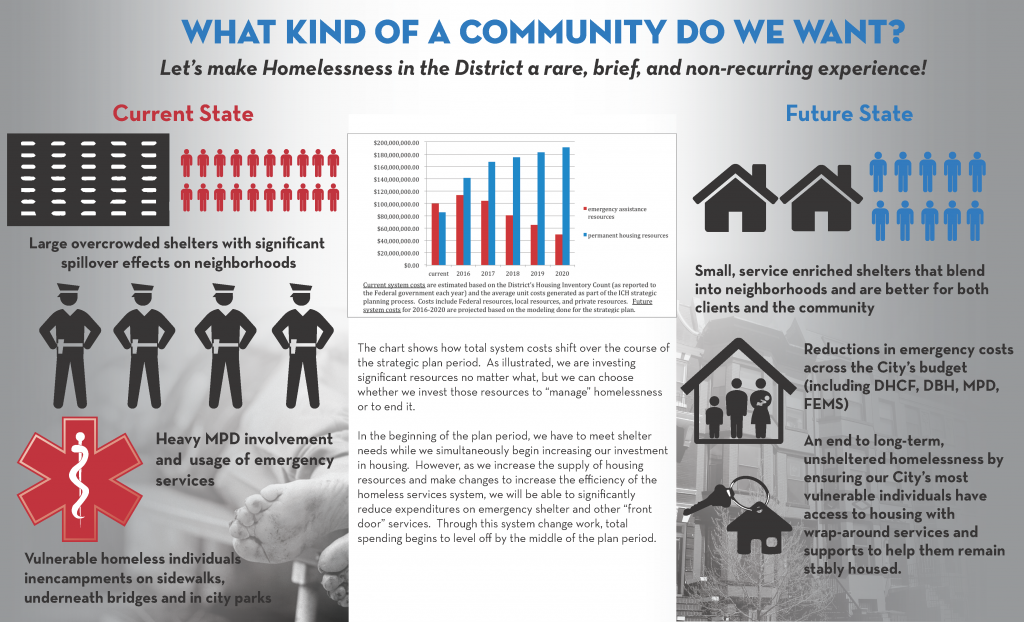Download the "What Kind of Community Do We Want" pdf by Clicking Here
Kristy Greenwalt, Director of the District of Columbia’s Interagency Council on Homelessness, and Laura Zeilinger, Director of the City of Washington Department of Human Services, recently led a task force focused on how to replace D.C. General Emergency Shelter, which houses hundreds of homeless families in our nation's capital.
As part of their Homeward D.C. plan, which lays out goals for making homelessness rare, brief and non-re-occurring, City leadership is committed to moving from antiquated, large, multi-family shelter settings, such as D.C. General, to a system that is nimble, responsive and geographically dispersed in areas where individuals and families who find themselves homeless can better connect to natural supports and receive community-based services in their neighborhoods.
Stakeholders from across the city, including CSH, participated in the task force meetings to help develop better alternatives for families. Ideas discussed include a “bathroom in every unit” and enough room and common areas to ensure children have safe spaces to play and learn. The District leadership led the task force through the process of “costing out” different models financially, operationally and through the eyes of the men, women and children who would be in the housing and using the services.
Kristy, Laura and their teams have done a great job of balancing a vision of a “perfect” shelter system with one that would eventually end up being a small piece of the District’s overall plan to create more affordable and supportive housing resources.
The challenge they face is "the reality of the situation" as the District continues to develop its affordable housing, community-based supportive services, employment and childcare supports while moving to replace D.C. General. Sorting through these important considerations and difficult realities, the City must balance how to build a better emergency shelter system as well as a more robust supply of affordable and supportive housing.
At a family stakeholder discussion, conducted by members of the task force, one resident best summed up what the City should be aiming for in its planning. When asked about the need for having a “bathroom” in every unit, a mother who had been raised in a shelter setting herself said, “We don’t need shelters with a bathroom in every room, that’s too expensive...we need City dollars invested in affordable housing and supportive services...we don’t want our children to call this place (an emergency shelter) their home. We want real homes.”



